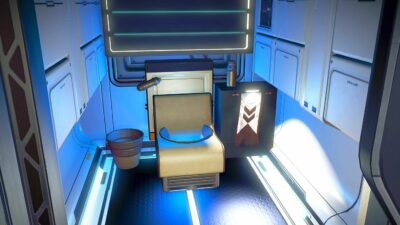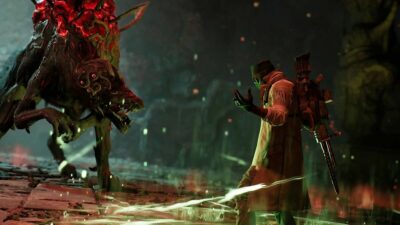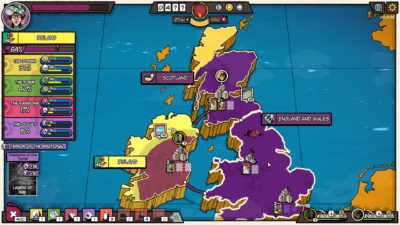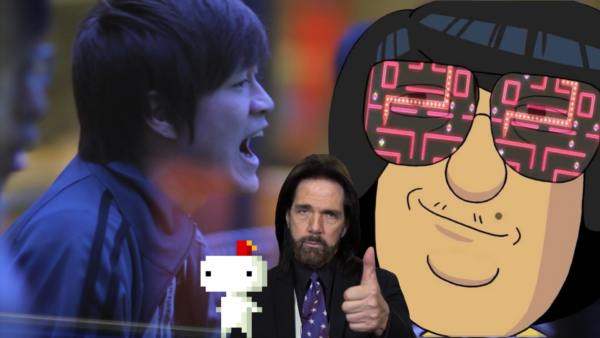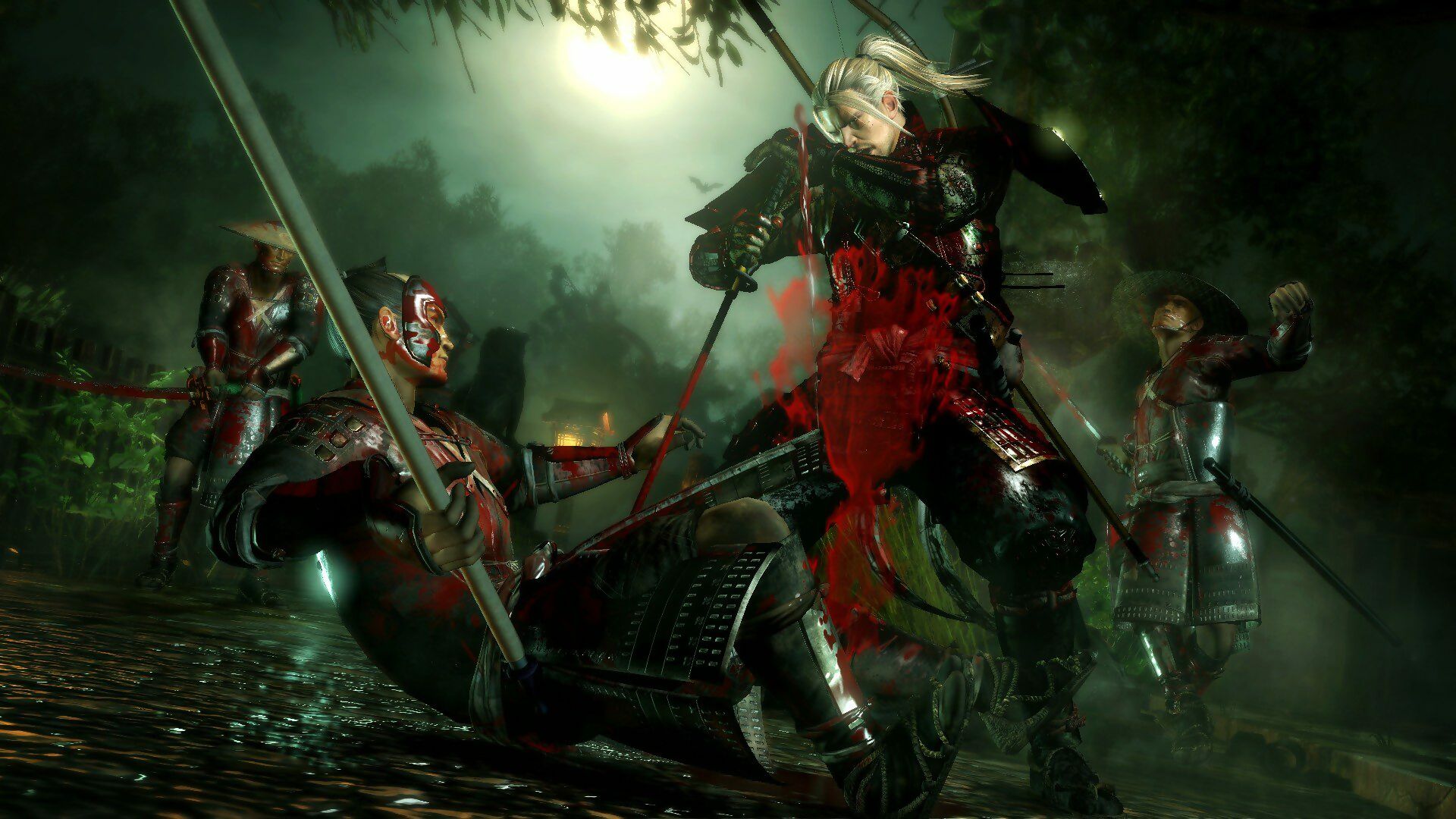
The Nioh series as we know it today was never meant to exist. Before it became a fast-paced spin on the ‘masocore’ sub-genre of hardcore action-RPGs in the vein of the Dark Souls series, it was originally announced by KOEI in 2005 as a PlayStation 3 launch title.
The project was developed for the better part of four years before the tough decision was made to scrap it – an unfortunate casualty of the Japanese publisher’s merger with former rival, TECMO.
“There was quite a big gap between then and 2013 when we first started picking up development and creating it from there,” jokes Fumihiko Yasuda, one of the game’s eventual co-directors. That ‘we’ he’s talking about is none other than Team NINJA, revered developer of the Ninja Gaiden series and a team known for creating challenging action-adventure games that reward patience and precision.
The studio was, in fact, brought in to aid on a version of the game ignited once KOEI TECMO was formed: a more traditional-feeling action game with RPG elements and steeped in Japanese culture.
It wasn’t until later, after much fan outcry, that Team NINJA was officially given the go-ahead to lead development on a new iteration. Suddenly, the studio felt inspired to make Nioh a reality, and a game that lived up to people’s high expectations.
“They’d been waiting for a long time since 2005 when it was initially announced,” Yasuda reflects. “So there definitely was an aspect of that in terms of seeing that this is really something that fans were anticipating.”
Like Souls
Taking the existing pieces of Nioh and transforming it into an action-RPG proved to be quite the challenge at first, though. Yasuda and his team knew they wanted to retain some established elements for the final game, like the idea of a foreign, blonde-haired hero traversing the Sengoku period and focusing on satisfying samurai combat, but in what way could they make it their own?
Luckily for Yasuda, in the years since Nioh’s announcement, a relatively new action-RPG sub-genre had become mainstream. The Souls shadow was looming…
“We took a look at the landscape of the video game industry at the time and saw that the Souls series was really doing well,” Yasuda explains. “There was definitely some inspiration there, which we then used to create our own take and spin – the original Team NINJA spin on the masocore genre.”

Nioh went through multiple design changes during development, but a constant was the idea of a blonde protagonist fighting in historical Japan.
Team NINJA was careful to use the FromSoftware template as a jumping-off point, infusing the deliberate third-person combat that certain players had developed a taste for with a much quicker pace.
“Me and the rest of the dev team realised what makes a Team NINJA game stand out from another studio’s titles,” continues Yasuda. “And it’s really that great core action gameplay that has a lot of substance to it, that is fun for players to engage in. So adding that kind of intensive action aspect was something we want to take into a masocore title.”
Setting scenes
The first Nioh was set in the Sengoku period of the 1600s – albeit laced with dark fantasy moments. So what made the Sengoku era perfect for Nioh over other potential settings? “Because it’s a really dark, tough, and brutal period of history, and that kind of goes along with both the genre and the vibe of Nioh,” Yasuda says.
It also allowed Team NINJA to mix the game’s supernatural elements with a sense of groundedness. “It’s a game steeped in fantasy, but it has a lot of individuals that come from history,” he explains.

The original Nioh features a range of boss-level Yōkai primed to test your skill with a blade.
“We worked hard to ensure that the characters from history are close to their actual representations, but that you have those fantasy aspects like the Guardian spirits in the background, adding that extra flair.”
Yasuda also cites Yōkai, the game’s spirit-like enemies, as a key area in which the game’s fantasy and reality elements collide. The ways Yōkai factor into Nioh also changed significantly between the release of the first and second games. Before that, though, Team NINJA had to be sure the player’s actions felt responsive and could allow for a range of different combat options.
It wasn’t enough to ape the heavyweight and guard-based gameplay of the Souls games. The stance system – in which main character William Adams can attack low, medium, or high – proved to be enough of a differentiating factor. “There are three phases you can think about in terms of the action,” Yasuda says.
“When you’re up close with the enemies, that’s when you’re using your weapons and attacks. Then, if you’re at a farther distance away from your enemy you can use magic. That’s kind of your long-range.

Team NINJA went bigger and better for most of the bosses featured in Nioh 2, balancing the difficulty by letting you take their powers upon defeat.
“But [we] really wanted something that would fit right in the middle, and that’s where the stance system comes in. Something to do in that interim period so that all three of those phases have something that the player is doing at all times, to really make this intense and packed experience.”
Stances enabled players to think strategically during combat, while also remaining true to the game’s cultural roots. “The stance system really allows you to improve on other strategies in the game,” says Yasuda. “For example, if you want to improve on your ability to dodge or evade attacks, or improve your ability to deal out damage, those elements really come in via the stance system.
“We wanted to also add in aspects of Japanese culture, such as kendo, and that’s important to Japan historically. There’s a direct connection between things you learn in kendo and the stances you can use in the game.”

You’re constantly looting better-powered items and equipment in the Nioh games, with most providing special effects and stat buffs.
In the years since FromSoftware near-single-handedly kickstarted a new sub-genre, players had come to expect a harsh level of difficulty; a factor which posed its own development challenges for Team NINJA.
How could the studio gauge whether Nioh posed a fair challenge or was just broken? Simply put, Yasuda and his team had played Nioh for so long that it became tricky to tell what was and wasn’t difficult.
Gaining player feedback via pre-release betas and demos, then, was key. This public response allowed the studio to, as Yasuda puts it, “remove all of the fluff, and aspects of the game that aren’t related to the difficulty”. And while Team NINJA was limited in how many adjustments it could make by the game’s release, feedback deeply informed the sequel two years later.
Nioh 2 would make several improvements over its predecessor, most notably with the switch to a custom character creation system. William Adams was out, which Yasuda says wasn’t an easy decision.

Axe-throwing isn’t a specific stance, but it is often hilarious.
“We really thought about it for a while, and went back and forth on the decision. The reason we chose it was to allow players to have that freedom to tell their own story; to have their own character that represents them and what they want to take on through the story.”
Despite this change, Yasuda (now the sole game director on the sequel) wanted to ensure that Nioh’s action remained as visceral and responsive as before. “I feel like Nioh and Nioh 2 both have that,” he says, “regardless of if you’re playing as William or your own original character – you’re still going to have that core action experience.”
Yokai Shift was another change in Nioh 2. It’s a mechanic that helped Nioh stand apart from its Soulslike brethren by letting players take on the abilities of fallen enemies and use them in battle.
This was a direct result of feedback from Nioh 2’s beta phase, where players commented that not much had changed from the original Nioh in terms of combat: Team NINJA took this critique to heart. Luckily, the distance between Nioh 2’s beta and the final game gave the studio plenty of time to add more depth to the Yōkai-related actions.

Fumihiko Yasuda was the creative director on both Nioh games.
“The reason we wanted to add in these Yōkai abilities is, when you’re a human character fighting against Yōkai and these more powerful enemies, the battle can start getting drawn out a bit,” explains Yasuda.
“We wanted to give the player those Yōkai abilities as well, letting them actually go toe to toe with some of these really fearsome Yōkai enemies. This also gave us another opportunity to improve the balance of the game, so players wouldn’t have battles that dragged on, and you’d have a better wealth of abilities that empower the player.”
Though risky, the changes implemented in Nioh 2 saw the game review just as highly as the first title. On its release in March 2020, Team NINJA not only achieved its goal of reviving the Nioh brand, but succeeded in creating its own spin on the Souls formula.
Yasuda hints that the series is on hiatus for now, yet sees the recent, souped-up Nioh 2 – The Complete Edition’s release on PS5 as a fitting place to pause. “I feel like the player is going to get a much fuller experience from playing on the newest hardware,” he says.


